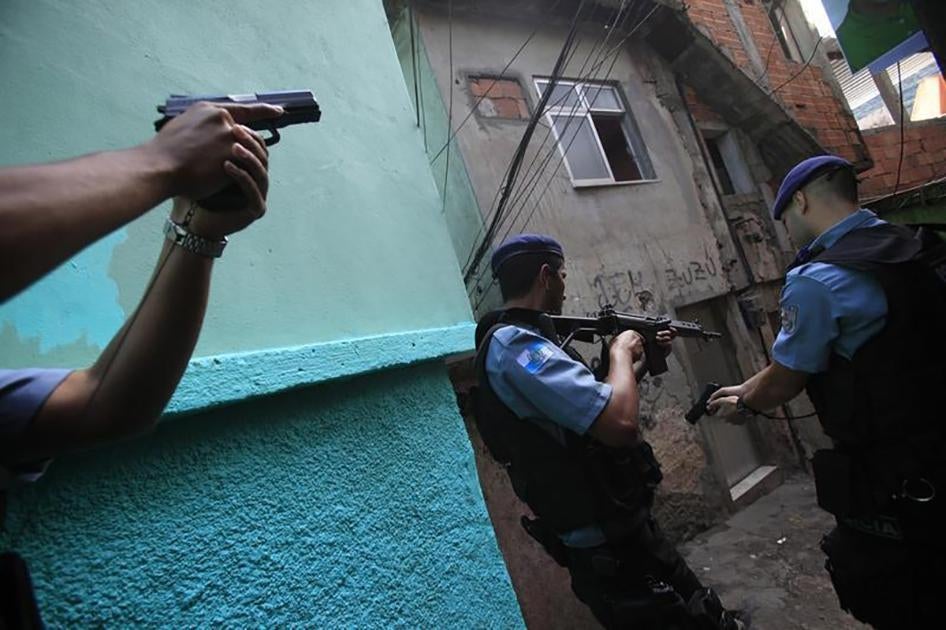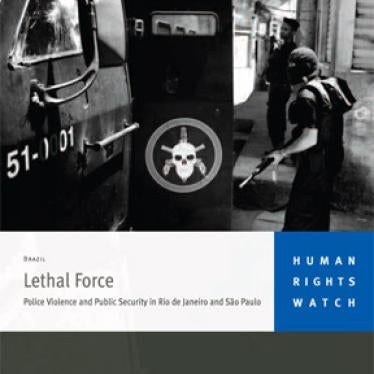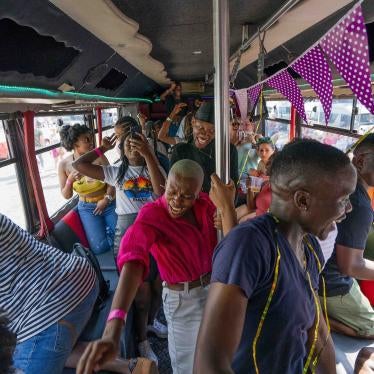The September 29 killing of Eduardo Felipe Santos Victor, a 17-year-old boy who lived in Morro da Providência shantytown in Rio de Janeiro, was remarkably similar to hundreds of other cases, at least according to the police officers involved in the incident. The officers were on patrol when, they said, someone shot at them. The officers shot back, hitting Victor, who, police said, had a gun, ammunition, and a radio transmitter.
Only this time a shocking video surreptitiously recorded by neighborhood residents in broad daylight shows five members of the military police faking a shootout. One officer shoots in the air and another puts a gun in the hand of the 17-year-old, who is on the ground, bleeding heavily, and fires it twice. The officers spend five minutes moving Victor’s body and otherwise altering the crime scene, but at no time in the video does any officer give medical assistance to Victor, who subsequently died.
Only last month, footage emerged of a military police officer throwing a man from a roof in São Paulo and another video showed police officers taking handcuffs off a man and pushing him behind a wall, where the officers apparently shot him and placed a gun by the body. In their official account, the police officers had said that they chased the two men after they stole a motorcycle together and killed them in shootouts.
Killings by police jumped last year in Rio de Janeiro and São Paulo, and continue their rise. The Institute of Public Security, a state agency, found that from January to August of 2015, police killed 459 people in Rio, an 18 percent increase over the same period of 2014. In São Paulo, state-collected figures reveal that police killed 415 people in the first six months of 2015, a 22 percent increase over the first half of last year.
Given the record of the police in Rio de Janeiro and São Paulo, there is a good chance that a significant part of the increase may be the kind of extrajudicial executions captured on the recent videos, which are further evidence of what Human Rights Watch and other groups have documented for years.
While some police killings are the result of legitimate acts of self-defense – whether of the police officers’ own lives or the lives of others, others are extrajudicial executions.
In our 2009 report “Lethal Force,” Human Rights Watch documented 51 cases in São Paulo and Rio de Janeiro in which credible evidence pointed to extrajudicial killings. In 2013, we documented another 22 police killings in São Paulo in which there was substantial evidence that they were extrajudicial executions. Like Victor, some of the victims in both sets of cases were children.
Amnesty International reached similar findings in a study published this year that analyzed nine killings by police in the Acari shantytown in Rio de Janeiro.
Both Rio and Sao Paulo have implemented measures to curb police abuses, but they have fallen short mainly because they have not tackled the fundamental issue of accountability. In the two recent cases – one in Rio de Janeiro and the other in São Paulo– the officers involved were detained after the videos were published. However, in cases in which nobody happens to be on the scene with a video camera, impunity is the norm. Research –ours, Amnesty International’s, and others’– shows that police officers responsible for unlawful killings in Rio and São Paulo are rarely brought to justice.
Police in Rio de Janeiro are often more interested in finding evidence that the person killed by police officers was linked to drug trafficking than in investigating the killing, a police chief and a homicide investigator interviewed by Human Rights Watch told us last June. Under that rationale, suspicion of drug trafficking is enough to justify an illegal death sentence.
Given Brazil’s high crime rate and the strength of criminal gangs, Brazilian police face a difficult and at times dangerous task, as demonstrated this week by news reports of the tragic killing of two officers in Rio de Janeiro. The unwarranted use of lethal force by police, however, is counterproductive to keeping the peace. Extrajudicial executions by police contribute to the violence rather than curbing it, and generate fears and distrust of the police in whole communities that undermines legitimate efforts by law-abiding officers to fulfill their important mission.
After Victor’s killing, police gave the newspaper Extra a video that purportedly showed the 17-year-old selling drugs, as though that were an excuse for killing Victor and altering the evidence.
The police need to stop blaming the victims and start detaining murder suspects, even if they are dressed in uniform.










